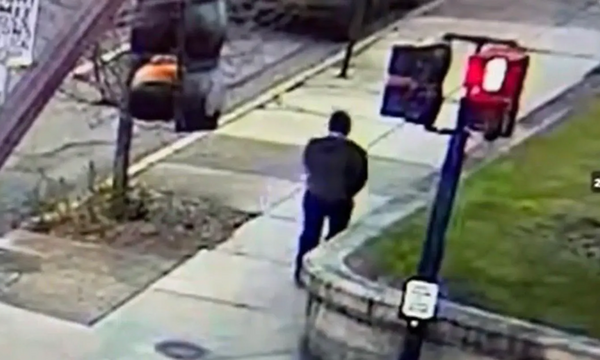
In things that scientists definitely should not be doing, Chinese scientists working on viruses created a mutant strand of COVID-19 that was 100 percent lethal to “humanized” mice.
The virus affected not only the lungs but also the bones, eyes, and brains. The study was carried out by the Beijing University of Chemical Technology.
The deadly virus — known as GX_P2V — attacked the brains of mice that were engineered to reflect genetic makeup similar to people, according to a study shared last week out of Beijing, according to The New York Post.
“This underscores a spillover risk of GX_P2V into humans and provides a unique model for understanding the pathogenic mechanisms of SARS-CoV-2-related viruses,” the authors wrote.
The deadly virus is a mutated version of GX/2017, a coronavirus cousin that was reportedly discovered in Malaysian pangolins in 2017 — three years before the pandemic. Pangolins, also called scaly anteaters, are mammals found in warm areas of the planet.
All the mice that were infected with the virus died within just eight days, which researchers noted was a “surprisingly” rapid death rate.
The announcement out of China sparked outrage from infectious disease doctors and scientists. Francois Balloux, an expert in infectious disease expert at University College London, took to social media, calling the study “scientifically pointless.”
‘I can see nothing of vague interest that could be learned from force-infecting a weird breed of humanized mice with a random virus. Conversely, I could see how such stuff might go wrong
I had a look at the preprint. It's a terrible study, scientifically totally pointless. I can see nothing of vague interest that could be learned from force-infecting a weird breed of humanised mice with a random virus. Conversely, I could see how such stuff might go wrong …
— Prof Francois Balloux (@BallouxFrancois) January 10, 2024
Professor Richard Ebright, a chemist at Rutgers University, told The Daily Mail that he wholeheartedly agreed with Balloux’s statement, adding, “The preprint does not specify the biosafety level and biosafety precautions used for the research.
He continued: “The absence of this information raises the concerning possibility that part or all of this research, like the research in Wuhan in 2016-2019 that likely caused the Covid-19 pandemic, recklessly was performed without the minimal biosafety containment and practices essential for research with a potential pandemic pathogens.”
Dr. Gennadi Glinsky, a retired professor of medicine at Stanford, was more to the point.
This madness must be stopped before too late.
https://t.co/h3D0gjKYVT— Dr. Gennadi Glinsky, MD, Ph.D. (@gglinskii) January 15, 2024
Chinese scientists tinkering with a virus that could wipe out humanity is not particularly reassuring. Over the past year, it’s become more and more likely that the Covid-19 pandemic came as the result of a lab leak in Wuhan, China. While Anthony Fauci and others looked to tar those who thought the virus originated from a lab as conspiracy theorists, privately, leaders like the head of the World Health Organization, Dr. Tedros Adhanom Ghebreyesus, privately confided that they believed the virus most likely came from the Wuhan Institute of Virology.
The release of the paper from Beijing comes as The Wall Street Journal writes that Chinese scientists hid details of Covid-19 for at least two weeks as the virus raged across the globe in December 2019.
“Documents obtained from the U.S. Department of Health and Human Services by a House committee and reviewed by The Wall Street Journal show that a Chinese researcher in Beijing uploaded a nearly complete sequence of the virus’s structure to a U.S. government-run database on Dec. 28, 2019. Chinese officials at that time were still publicly describing the disease outbreak in Wuhan, China, as a viral pneumonia “of unknown cause” and had yet to close the Huanan Seafood Wholesale Market, site of one of the initial Covid-19 outbreaks.
China only shared the virus’s sequence with the World Health Organization on Jan. 11, 2020, according to U.S. government timelines of the pandemic.
The extra two weeks could have proved crucial in helping the international medical community pinpoint how Covid-19 spread, develop medical defenses and get started on an eventual vaccine, specialists have said. In late 2019, scientists and governments worldwide were racing to understand the mystery disease eventually named Covid-19 that would kill millions and sicken many more.
It ‘underscores how cautious we have to be about the accuracy of the information that the Chinese government has released,” said Jesse Bloom, a virologist at the Fred Hutchinson Cancer Center in Seattle who has reviewed the documents and the recently discovered gene sequence. “It’s important to keep in mind how little we know.’”
[Read More: John Kerry Blows Up At Reporter For Simple Question]











